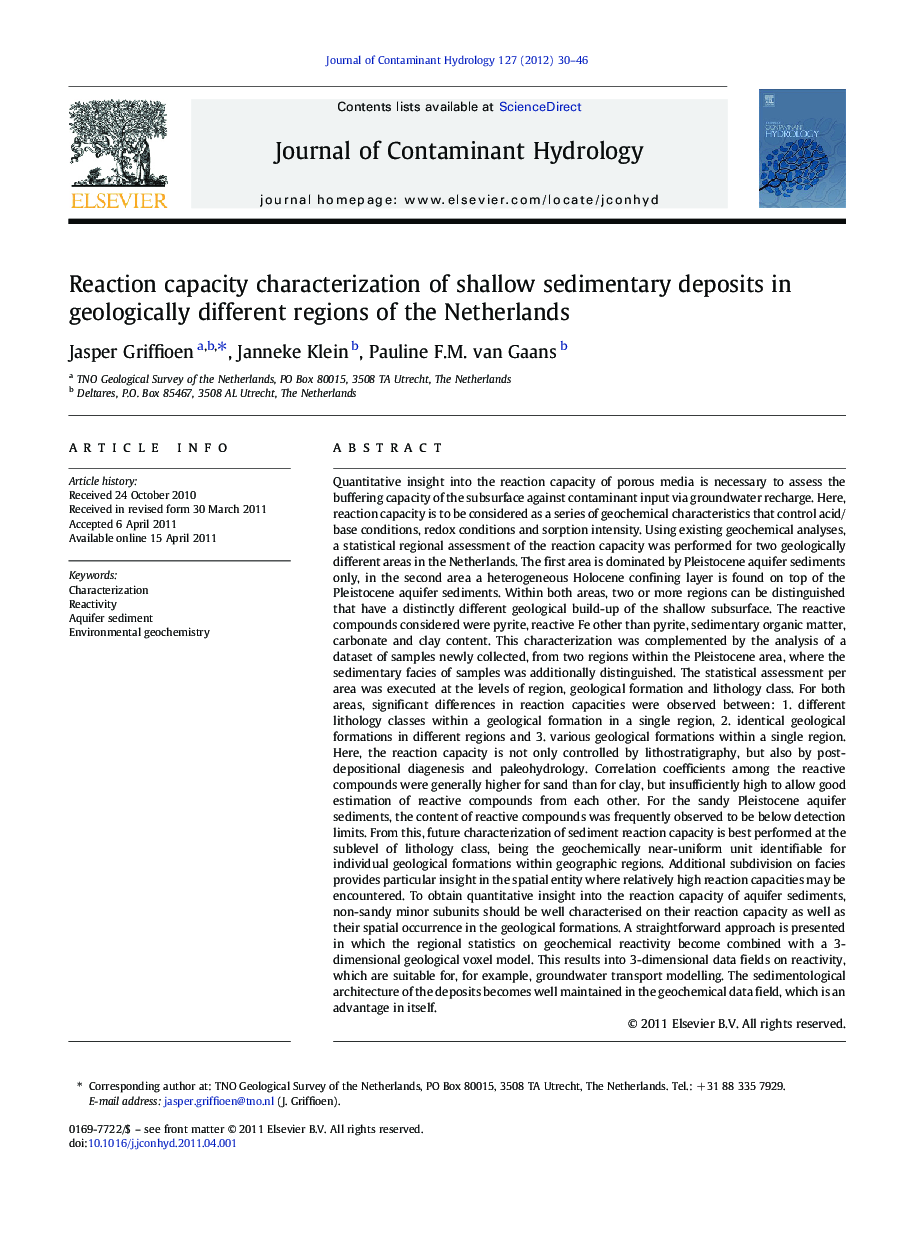| کد مقاله | کد نشریه | سال انتشار | مقاله انگلیسی | نسخه تمام متن |
|---|---|---|---|---|
| 4546886 | 1627073 | 2012 | 17 صفحه PDF | دانلود رایگان |

Quantitative insight into the reaction capacity of porous media is necessary to assess the buffering capacity of the subsurface against contaminant input via groundwater recharge. Here, reaction capacity is to be considered as a series of geochemical characteristics that control acid/base conditions, redox conditions and sorption intensity. Using existing geochemical analyses, a statistical regional assessment of the reaction capacity was performed for two geologically different areas in the Netherlands. The first area is dominated by Pleistocene aquifer sediments only, in the second area a heterogeneous Holocene confining layer is found on top of the Pleistocene aquifer sediments. Within both areas, two or more regions can be distinguished that have a distinctly different geological build-up of the shallow subsurface. The reactive compounds considered were pyrite, reactive Fe other than pyrite, sedimentary organic matter, carbonate and clay content. This characterization was complemented by the analysis of a dataset of samples newly collected, from two regions within the Pleistocene area, where the sedimentary facies of samples was additionally distinguished. The statistical assessment per area was executed at the levels of region, geological formation and lithology class. For both areas, significant differences in reaction capacities were observed between: 1. different lithology classes within a geological formation in a single region, 2. identical geological formations in different regions and 3. various geological formations within a single region. Here, the reaction capacity is not only controlled by lithostratigraphy, but also by post-depositional diagenesis and paleohydrology. Correlation coefficients among the reactive compounds were generally higher for sand than for clay, but insufficiently high to allow good estimation of reactive compounds from each other. For the sandy Pleistocene aquifer sediments, the content of reactive compounds was frequently observed to be below detection limits. From this, future characterization of sediment reaction capacity is best performed at the sublevel of lithology class, being the geochemically near-uniform unit identifiable for individual geological formations within geographic regions. Additional subdivision on facies provides particular insight in the spatial entity where relatively high reaction capacities may be encountered. To obtain quantitative insight into the reaction capacity of aquifer sediments, non-sandy minor subunits should be well characterised on their reaction capacity as well as their spatial occurrence in the geological formations. A straightforward approach is presented in which the regional statistics on geochemical reactivity become combined with a 3-dimensional geological voxel model. This results into 3-dimensional data fields on reactivity, which are suitable for, for example, groundwater transport modelling. The sedimentological architecture of the deposits becomes well maintained in the geochemical data field, which is an advantage in itself.
Research highlights
► Regional geochemical characterisation of sedimentary deposits based on data sets.
► Geological formations and regions show significant differences on reaction capacity.
► Novel approach to obtain subsurface data fields on sediment reactivity.
Journal: Journal of Contaminant Hydrology - Volume 127, Issues 1–4, 1 January 2012, Pages 30–46